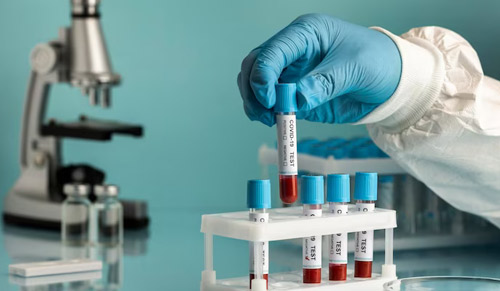- Mon – Sat : - 8:30 AM - 9:30 PM

Diagnostic procedures known as haematology tests assist medical practitioners in evaluating several facets of blood function and composition. Anemia, infections, clotting disorders, and leukemia are just a few of the many medical illnesses for which these tests are essential for identifying and tracking.
These are a few typical tests in haematology:
One of the most common haematology tests is a complete blood count (CBC). It offers important details regarding the quality and quantity of blood cells. Red blood cells (RBCs), white blood cells (WBCs), and platelets are among the components that are analyzed. The diagnosis of diseases like anemia, infections, and blood abnormalities can be aided by CBC results.
In a peripheral blood smear, the size, shape, and appearance of blood cells are evaluated by looking at a thin layer of blood under a microscope.
This test is helpful in detecting platelet, white blood cell, and red blood cell abnormalities that might not be visible on a complete blood count (CBC).
These tests quantify the concentrations of several materials in the blood, including proteins, enzymes, and electrolytes.
Tests for glucose levels, renal function, and liver function are a few examples.
Coagulation tests assess the blood’s appropriate clotting capacity. Prothrombin time (PT) and activated partial thromboplastin time (aPTT) are frequent tests.
These tests aid in the diagnosis and surveillance of disorders pertaining to bleeding and coagulation.
To obtain samples of bone marrow tissue for analysis, a bone marrow aspiration or biopsy may be necessary in specific circumstances.
Leukemia and lymphoma are two diseases that affect the bone marrow that require this test to diagnose and track.
The purpose of this test is to detect and measure the various forms of hemoglobin in the blood.
It is especially helpful in the diagnosis of hemoglobinopathies such as thalassemia and sickle cell anemia.
The rate at which red blood cells settle in a blood tube over time is measured by the ESR.
Increased ESR readings could be a sign of inflammation or other underlying issues.